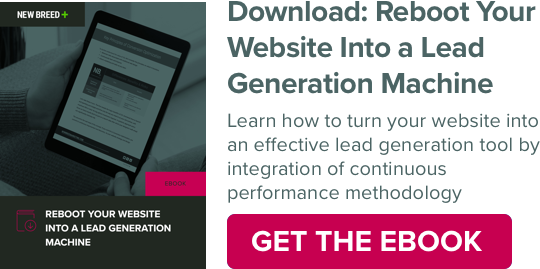
At the end of the day, all of your inbound marketing efforts exist in order to turn prospects into customers. As leads enter the top of your marketing and sales funnel, it's important to manage these leads effectively so you can market to them correctly.
You want your prospects to progress past the lead stage and to ultimately become customers, so instead of treating every prospect the same, you should use lead management techniques to collect information on each lead and provide them with relevant content and a personalized experience.
We want to show you a few techniques that will help you employ better lead management strategies, while also driving more revenue by helping to ensure the success of your inbound marketing campaign.
Here are six techniques for effective lead management, which can increase your conversion rates and guide leads down the funnel.
1. Lead Scoring
Lead scoring comes down to two things: interest and fit. A lead score allows you to assign value to different actions your prospect may partake in and therefore gain a better understanding of which leads should be prioritized.
The action of a prospect clicking on an email would have a different weight on the lead scoring scale than a prospect filling out a form on your website. These actions would then generate a lead score that would determine where a prospect falls on your list of priorities and help you effectively guide them through your content.
Your goal as a marketer should be to increase interactions with high fit prospects thereby increasing their lead score and gathering more information to use in future communications. Marketers and salespeople can also clearly prioritize which leads should garner the most attention and follow up and clearly define the various lifecycle stages of the buyer's journey.
2. Segmented Lists
A segmented list is what you create to sort your leads and prospects into different groups to determine what type of content will most resonate with them.
One of the easiest ways to utilize a segmented list is to separate your prospects by your buyer personas, but you can also separate them by lifecycle stages or by targeted accounts if you’re taking an account-based marketing approach.
By segmenting all of this data into lists, you can empower your marketing efforts and drive your company forward. Tools like HubSpot allow marketers to slice and dice lead data nearly any way imaginable. Do you want to know which prospects engaged with multiple offers but have not returned to your website in the last month? It only takes a few clicks to create a segmented list of those contacts.
3. Effective Strategy with Smart Forms
Use form fields to continue gathering pertinent information about your leads. By taking advantage of the smart form feature, you can create a tailored experience for your prospect every time they are on your site — rather than filling out the same forms over and over again, a smart form will prompt your prospect with fields specific to their lifecycle stage and previous interactions instead. Not only will this continue to help you score and segment leads, but the tailored experience will continue to nurture your leads through their buyer journey.
4. Lead Nurturing
Now, take the data from the lists that you’ve gathered and enroll leads into workflows and lead nurture campaigns. Rather than focusing your efforts on bottom of the funnel leads, present prospects of all lifecycle stages with relevant content. For example, you can institute a post-download nurture campaign.This is an effort to follow up with contacts after they have downloaded a specific piece of content to maintain engagement, and help guide them through their buyer’s journey.
5. Smart Content
Once a prospect has downloaded one of your content offers, it doesn’t make sense to continue promoting that offer to them. Instead, help nurture that lead by presenting a different, related offer that will build off their previous engagement and continue to educate them about the topic and relevant solutions that your organization has to offer.
With tools like HubSpot’s Smart CTAs, you can do just that. You can serve up different calls-to-action based on how a prospect has already engaged with your content. Essentially, you're tailoring their website experience to their individual needs. As a result, you can then choose how to guide a prospect through your website content.
6. Chatbots
Chatbots are another great resource for tailoring user experience. With a chatbot, you can meet prospects exactly where they are and engage with them directly to guide them through the lead nurture process. This can look like booking a meeting via chatbot or linking relevant content to your prospects. Any interaction a prospect has with a chatbot will provide you different forms of aggregate data — which pieces of content they are interested in, what types of questions they are asking at different lifecycle stages, etc. By using this aggregate data, you can continue to segment your prospects and ultimately improve your workflow.
By integrating these six techniques into your lead management strategy, you'll see a dramatic increase in your conversion rates. If you need help developing lead management techniques, download our e-book on rebooting your website into a lead generation website:





